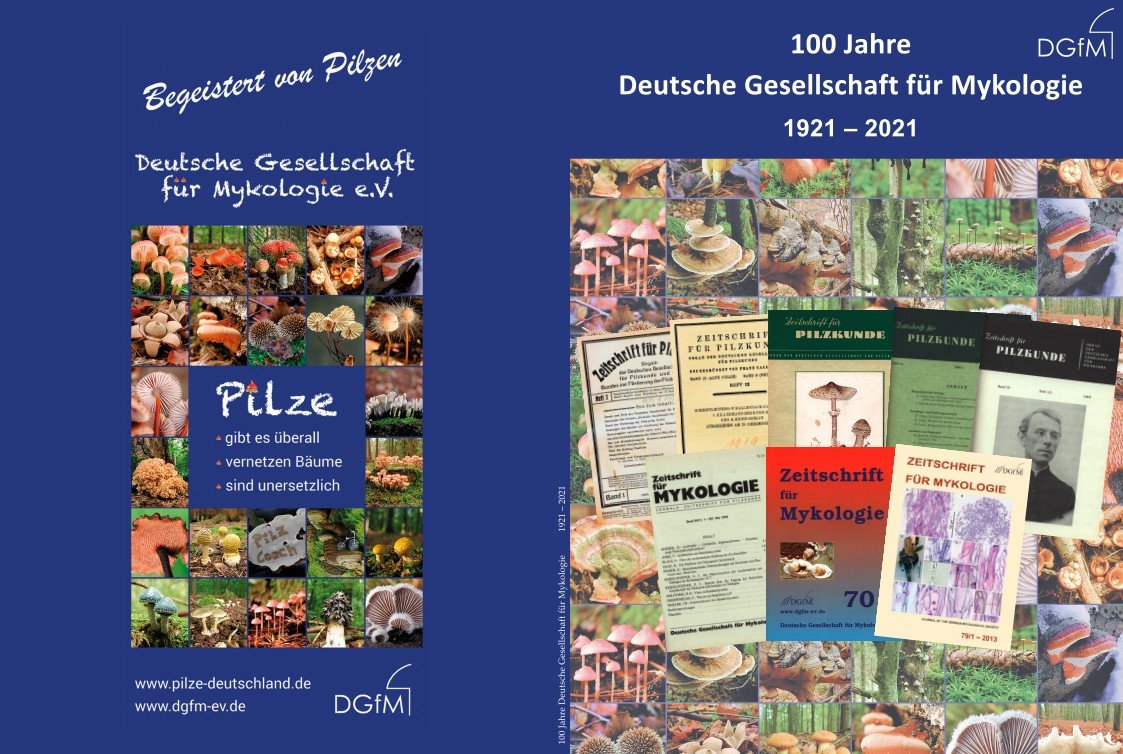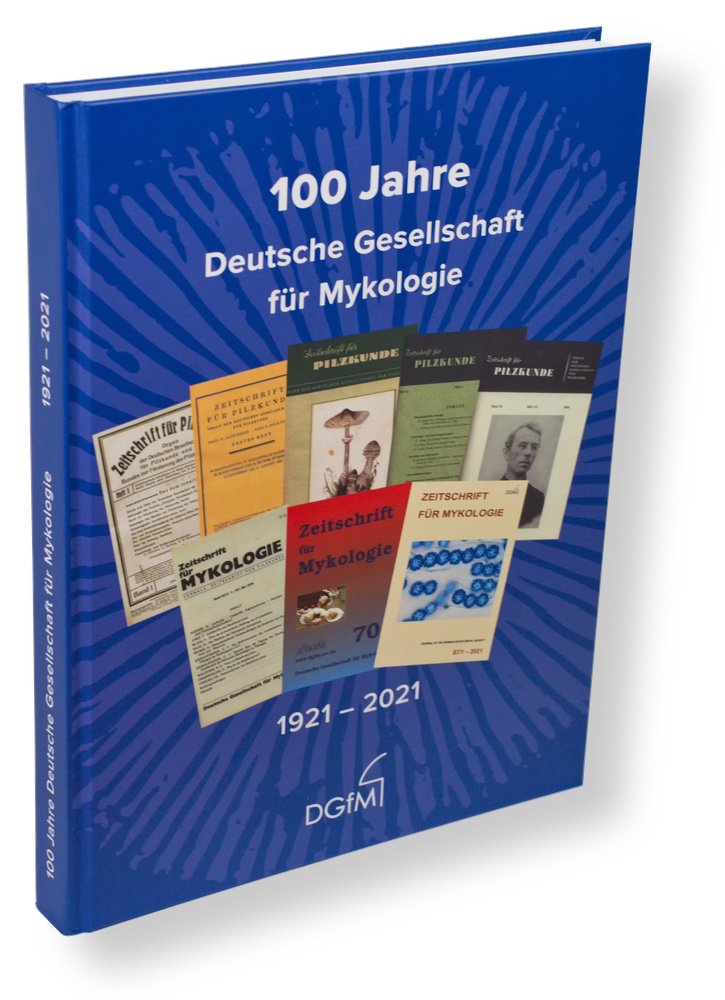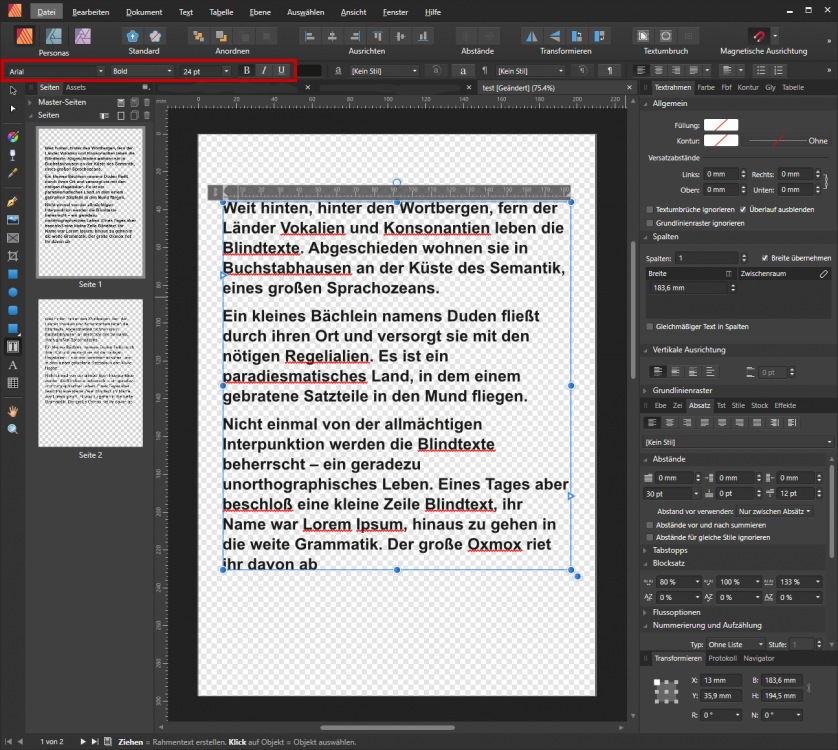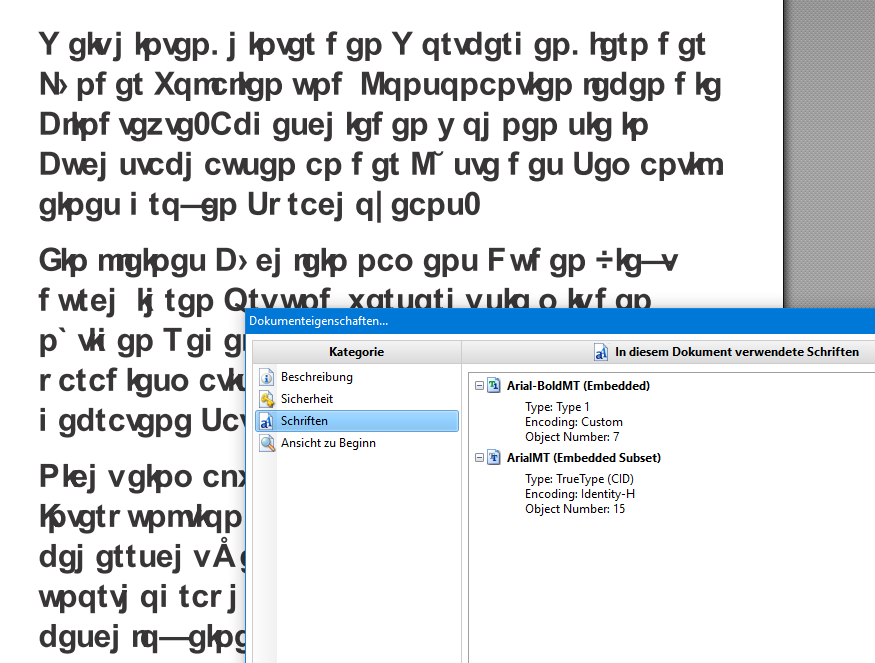-
Posts
13 -
Joined
-
Last visited
Posts posted by AK_CCM
-
-
Hi all,
in 2021, I layouted the book cover of the German Mycological Society's anniversery publication. Some elements of the design concept I took over from the draft of my collegues Josef Maria Christan, Stefan Fischer and Rita Lüder which made the job easier - much thanks at this point:

This is the final book cover:
Here's an screenshot of the app window with the cover:
... and a photo of the front of the printed book:
As a major design element on the front (U1), I've placed a spore print in the background with 15 % opacity. For that I vectorised the bitmap with Inkscape and saved the result as .SVG file.
And here you could find an deepl.com based English translation of the book description:QuoteThe book ‘100 Years of the German Mycological Society’, completed in 2021 to mark the anniversary, provides a well-founded overview of the society's exciting 100-year history as well as its diverse activities and programmes today on almost 300 pages. The richly illustrated work is topped with interesting facts and background information about the society.
Historical part
Under the editorship of Stefan Fischer, the authors have succeeded in presenting the history of the German Mycological Society in its entirety and in such detail for the first time on the basis of extensive and in-depth research. The first part of the book is supplemented by two major biographical articles on Hans Haas and Sebastian Killermann, two outstanding personalities of the society.
Data, facts, interesting facts
The middle section contains overviews of the previous board members, honorary chairmen and honorary members, the DGfM's numerous award winners and all previous ‘Mushrooms of the Year‘. Also very informative is an article on the archive and library of the society's own publications, illustrated with a gift of photographs from 1970.
From the life of the society
The third and final section is dedicated to the colourful life of the society. One article discusses the possibilities of using mapping to monitor the species of fungi found in Germany. Further articles present the training courses for university-certified mycological consultants, field mycologists, mushroom experts and mushroom coaches and provide detailed insights into their areas of activity and training centres. A scientific contribution by toxicologist Prof Dr Siegmar Berndt on Morchella syndrome is sure to attract wide interest. The whole thing is livened up with little anecdotes that will make the reader smile.
- dannyg9, VectorWhiz, ClarityDynamic and 4 others
-
 7
7
-
By the way the mushroom drawing on the front was not my first choice: I had endeavoured for a long time to use one of the excellent watercolours of Claus Caspari (1961), but unfortunately communication with the rights holder was so delayed that I had to use an alternative drawing due to the printing company's deadline.
It's always a pity when you can't fully realise your own ideas due to a third party.
- VectorWhiz and Alfred
-
 2
2
-
Hi all,
in 2023, I designed the cover of the German Mycological Society's guideline for mushroom experts:

The blurred yellow texture in the background is a retouched photo detail of a chanterelle (my photo at Wikimedia Commons). As a contrast, I placed a watercolour by Emil Dörstling of the poisonous satanic mushroom (Rubroboletus satanas) on the front. For the back cover, Rita Lüder (kreativpinsel.de) provided me with her line drawing of the poisonous deathcap (Amanita phalloides). And here you could find an English translation in assistance with deepl.com of the text:
QuoteFrontcover:
- Title: Guideline for mushroom experts
- Subtitle: Tips and assistance for mushroom experts and all those who want to become one
- Label: new version
Backcover:
Mushroom picking is all the rage and once you've been bitten by the bug, it's often only a small step from being a mushroom picker to becoming a certified mushroom expert. This guidebook is intended to accompany mushroom enthusiasts on their way to becoming a mushroom expert and serve as a reference book for anyone who has successfully completed their training.
The book addresses common questions that PSVs encounter time and again in practice and provides a wealth of tips and information on these topics in a clearly organised format:
- Training as a mushroom expert
- Tasks and activities of a mushroom expert
- Cooperation with poison information centres
- Detailed overview of poisoning syndromes
- Species portraits of the most important poisonous mushrooms
- Protected areas, species protection, collection restrictions
- Organisational and legal matters
Best regards from Germany
Andreas
-
Hello all,
I am responsible for public relations at the German Mycological Society and create all my printing templates with Affinity Publisher. However, a colleague from the Presidium, who also designs printed matter, has been working with Indesign for years. Neither she nor I want to learn how to use the other app. Besides, I am not willing to spend money of our society for this and certainly not my own.
I myself have an easy job importing her data: She exports her documents as PDF/X-4 files with image compression disabled. I open them and save them as .afpub files. With version 1.8 I can now also use IDML import.
But how can my colleague open my .afpub or .pdf files? Unfortunately, Indesign can only open .pdf files as images. And .afpub files aren't supported, if I remember correctly. But without being able to exchange the data in both directions, there is no efficient creative collaboration. In any case, I wouldn't know how.
Because of that it would be great if Serif could add IDML export in future.
Regards, Andreas
-
Curious. I extractet the fonts directory from the install.wim of the installation iso. Then I copied the font files into the C:\WINDOWS\Fonts directory of my system. And the error is there again. Tomorrow I'll try to solve the error.
Update: I cleaned the font cache (services.msc contains no entry, so I had to stop the service with the command "net stop FontCache"). Then I added two .reg files to the Windows registry (please have a look to the quote below). After I restarted the computer all is working fine.
QuoteWindows 10/8.1 Default Font Archives
If you don’t have a Windows 10 (Windows 8.1) installation image, you can copy the directory with the original fonts from another computer running the same OS version or use ready font archives that can be downloaded from the links below:
- Default fonts for Windows 8 – DefaultFontsWin8.zip (197 MB);
- Default fonts for Windows 8.1 – DefaultFontsWin8-1.zip (258 MB);
- Original fonts for Windows 10 1803 (suitable for other Windows 10 builds) — DefaultFonts-Win10-1803.zip (197 MB).
Download and unzip the archive for your Windows version and copy its contents to the C:\Windows\Fonts folder with the replacement of the files.
Also download and apply (double click) the following reg files from the archive win10-default-fonts-reg.zip.
The first file (win_10_fonts.reg) contains a list of standard fonts registered in the registry (HKLM\SOFTWARE\Microsoft\Windows NT\CurrentVersion\Fonts).
The second file (win_10_FontSubstitutes.reg) contains font association settings (HKLM \SOFTWARE\Microsoft\Windows NT\CurrentVersion\FontSubstitutes).
Restart your computer, the problem with the fonts should be gone!
Source: http://woshub.com/how-to-restore-default-fonts-in-windows-8-1/
I hope, that this solution could help any other Windows 10 users to solve their corrupted standard fonts.
-
Yes, I'm using Windows 10.
It would be great if you could send me the most current fonts via PM.
Thanks in advance
-
I'm using no extra font manager.
I cleared the Windows font cache - the same before.
After that I downloaded the Arial fonts from the Microsoft TrueType core fonts at Sourceforge, unzipped the archives and copied the .ttf files into the WINDOWS/Fonts directory. After restart the Publisher the exported PDF is showing well. I think the fonts were destroyed.
Thanks for your helping hints
-
Thanks for your test.
How could I solve the font cache corruption?
-
Hello,
if I export a file with text in a field (Arial Bold) as PDF the text is shown like character salad. If I use the Microsoft PDF printer or change the text to regular the exported PDF is showing correct.
What did I wrong - could anyone help me please?
Best regards,
Andreas
-
Affinity Publisher is much cheaper than Indesign and is available without a subscription. I am convinced that the program will find its buyers.
An open file format would give Serif the chance to open closed InDesign workgroups for afpub users. A practical example: I volunteer my time in a non-profit organization and occasionally design flyers and posters together with a colleague. But she works with InDesign and I use afpub. She saves her work for me as PDF/X-4 files, which I can easily open with afpub. But I have not yet found a satisfactory solution for the opposite direction.
Whether Adobe would then support the format in his program is, of course, on a different page.
-
Hi MEB,
thanks for your fast response.
Do you know anything about the price range of the Affinity Publisher?Is the program payable for private users?
Best regards
Andreas -
Hello,
I've read this on your website:
We are working on a new Desktop Publishing application, Affinity Publisher, as part of our next generation Affinity Suite.
Will Affinity Publisher open PagePlus X9 *.ppp files?
Thanks in advance
Best regards from Germany
Andreas













Book cover of a publication honouring the 100th anniversary of a society
in Share your work
Posted
I'm glad you like my work.
Of course, it was an honour for me to develop and finalise the cover of the anniversary book. That was not so easy because my collegues had already done the first version. Like me, they had worked on a voluntary basis, i.e. unpaid. In this respect, individual contributors can easily feel left behind. That's why I thought it was important to adopt the basic idea for the revised layout.
Then it wasn't that difficult: first I removed the mushroom photo mosaic on the front so that the magazine covers would contrast better. Then I centred all the elements (the anniversary, the name of the society, the magazine covers, the time period and the logo) and aligned them with sufficient spacing.
The spore print in the background with reduced opacity then completed the layout: firstly, it is something different from any mushroom fruiting bodies and secondly, all mushroom experts recognise a spore print in the abstract-looking design element.
I chose Proxima Nova as the font with decreasing weights: 100 years = extrabold, the name of the society = bold, the time period = semibold. Today I would perhaps increase the character spacing slightly to give the text more space. If I had to choose a free font, I would choose ‘Inter’ (designed by Rasmus Andersson) from the Google Fonts, for example. It would be important to me to have a font with a more modern style, where the ‘g’ doesn't look like a pair of glasses.